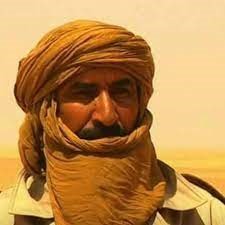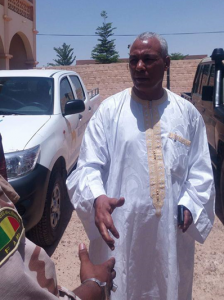Andrew McGregor
July 6, 2017
From the moment of its independence in 1960, Mali was almost doomed to failure as a post-colonial state created from the territories of French West Africa. With its odd, bow-tie shape incorporating a larger but sparsely populated Muslim Sahel-Saharan region in the northeast and a smaller but more fertile, more populated Muslim/animist region in the southwest, the two distinct areas of Mali had little in common, including severe racial and tribal divisions that ignite communal violence to this day.
Northern Mali (known in rebel parlance as “Azawad”) is home to a number of ethnic groups, including Arabs, Songhai, Peul/Fulani, Moors and the Tuareg, a desert-dwelling branch of the North African Berbers. Clan-based and stubbornly independent, the Tuareg stretch across the deserts and mountains of Algeria, Mali, Niger, Burkina Faso and Libya. One of their most formidable strongholds is in the Kidal region of northern Mali, bordered to the north by Algeria and to the east by Niger. The Tuareg came to international prominence during their stiff resistance to French imperialism in the 19th and early 20th centuries. For many in Kidal, life in post-independence Mali is simply a new and similarly unwanted form of colonialism.
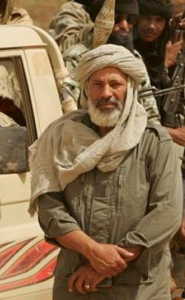 Colonel Hassan ag Fagaga (Malijet)
Colonel Hassan ag Fagaga (Malijet)
Born in 1958 as a member of the Ifergoumessen clan of the “noble” Kidal Ifoghas Tuareg confederation, Hassan ag Fagaga was still a child when portions of the Kidal Tuareg rose up in their first post-independence rebellion in 1963. The rising, which suffered from unfulfilled hopes of Algerian and French support for Tuareg independence, was quickly crushed. A ruthless repression by the new Malian government (dominated by southern Bambaras) involving massacres and torture created a legacy of animosity and resistance in the Kidal Tuareg. The rebellion was fuelled by racially-fuelled anger at a colonial decision to place the “white” Tuareg under the rule of “blacks” (the Malian majority) whom the Tuareg had always viewed as servants or slaves. [1] This was the formative environment in which the young Hassan lived.
Rebellion of 1990-1996
A second rebellion by young Tuareg fighters began in Ménaka in June 1990. Many of the rebels, like ag Fagaga, had military training in Libya as part of Qaddafi’s “Green Legion,” which fought in Lebanon and Chad without ever achieving its intended “elite” status. The new rebellion would establish many clan and class-based divides in the Tuareg community that continue to endure and torment efforts to bring a resolution to the cyclical violence in northern Mali.
The revolt was led by the Mouvement Populaire de Libération de l’Azawad (MPLA), largely composed of fighters returning from Algeria and Libya, where many Tuareg had taken refuge from famine, persecution and economic deprivation.
Colonel Amadou Toumani Touré became president in March 1991 by overthrowing President Moussa Traoré. The change led to the negotiatioin of the Algerian-brokered 1991 Tanamrasset Agreement, which split the MPLA into three factions:
- The Mouvement populaire de l’Azawad (MPA) led by Iyad ag Ghali (Iriyaken Tuareg and currently Mali’s most wanted man). Mostly Kel Ifoghas, including Ifergoumessen, the MPA signed the agreement and went over to the government;
- The Front populaire de libération de l’Azawad (FPLA) led by Zeidan ag Sidalamine. Mostly Kel Intessar from Gouna region, southwest of Timbuktu, and Chamanamas Tuareg from the Ménaka region. The FPLA rejected the agreement;
- The Armée révolutionnaire de libération de l’Azawad (ARLA), led by al-Hajj ag Gamou (Imghad). [2] Mostly Taghat Mellit and Idnane Tuareg, the ARLA also rejected the agreement.
A fourth rebellious faction was the Front islamique arabe de l’Azawad (FIAA) a group led by Ahmad Ould Sidi Mohamed and consisting of Malian Arabs and Moors (i.e. Mauritanian Arabs and Berbers). This group also went over to the government in 1991. The MPA and the FIAA joined the Malian Army’s Mixed Brigades, which now fought their former allies in ARLA and the FPLA.
In February 1994 al-Hajj ag Gamou stunned the Ifoghas and other traditional Tuareg by kidnapping the amenokal (supreme chief), Intallah ag Attaher. Though the amenokal was later released unharmed in a prisoner exchange, this shocking attack on the social order led to the dissipation of ARLA support and by the end of 1994 the group had been thoroughly defeated by the Ifoghas and their allies. [3] Integrated into the Malian Army after the rebellion, ag Gamou became a Bamako loyalist and eventually the first Tuareg to join the Malian general staff. He and Fagaga would meet on the battlefield repeatedly over the coming years.
Fighting flared on and off until 1996, when various Tuareg rebel factions reported for demobilization and disarmament, fulfilling their “disarmament” by tossing many ancient and useless weapons into the bonfire of the televised “Flame of Peace” ceremony attended by the president in March 1996. At this point ag Fagaga was integrated as an officer in the Malian Army.
Rebellion of 2006
During an April 2006 visit to Timbuktu, Mu’ammar Qaddafi abused his hosts by expressing his support for the creation of an independent Tuareg state (Jeune Afrique, March 19, 2007). Qaddafi’s words inspired ag Fagaga to desert the Malian Army and mount another rebellion in league with his Ifergoumessen cousin Ibrahim ag Bahanga and Ahmad ag Bibi, calling themselves the Alliance démocratique du 23 mai pour le changement (ADC).
The uprising began as some 150 Tuareg soldiers rallied under Lieutenant Colonel ag Fagaga and left their barracks with their weapons and vehicles. According to Fagaga, the rebels would eventually number 2,000, including some 200 deserters from the armed forces (Jeune Afrique, May 29, 2006). The ADC was largely Ifergoumessen, but attracted some Idnane Tuareg. [4]
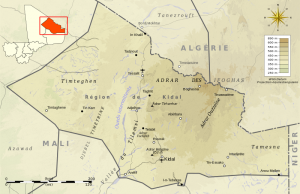 Kidal (© Bourrichon)
Kidal (© Bourrichon)
Based in the Adrar des Ifoghas (the main mountain range in Kidal), the movement launched attacks on Kidal and Ménaka. Iyad ag Ghali soon took overall command, with Fagaga leading military operations. As usual, clan and personal rivalries played an important part in the rebellion – Fagaga’s desertion may have been prompted by the promotion of al-Hajj ag Gamou (member of a “vassal” clan) over Fagaga, a member of a “noble” clan.
Fagaga maintained that the rebellion was prompted by “serious discrimination” against Tuareg in the military as well as a lack of development in northern Mali. He went on to deny Libyan funding and said he was seeking autonomy for the north within a Malian state: “The Tuareg cannot indefinitely accept to live as second-class citizens in their own country” (Jeune Afrique, May 29, 2006).
The 2006 rebellion ended before the close of the year with an Algerian-brokered settlement, one clause of which stipulated the rebels would be absorbed into the Malian Army. Fagaga was back in Malian uniform.
Rebellion of 2007-2009
Government failure to implement the peace agreement led Fagaga, a Lieutenant Colonel, to desert the National Guard in August 2007. Still using the name ADC, Fagaga acted as military commander while his cousin Bahanga (also a deserter) took overall command. Bahanga’s Paris-based father-in-law, Hama ag Sid’Ahmed, acted as the group’s political representative.
In September 2007, Bahanga attacked Malian troops at Tinzaoutene, the headquarters of his smuggling network. Throughout the conflict, Bahanga and Fagaga have great success in capturing demoralized troops from southern Mali and holding them hostage.
In the same month, Bahanga and Fagaga created the Alliance Touaregue Niger-Mali pour le changement (ATNMC), a movement that was rejected by the Niger Tuareg and never received the same level of support as the ADC within northern Mali. The movement also continued to use the name ADC in official communications. In May 2008, the movement changed its name but retained its acronym, better reflecting its Malian base as the Alliance Touaregue Nord Mali pour le changement (ATNMC)
In March 2008, Fagaga threatened to “eliminate” any al-Qaeda fighters entering the Tuareg rebels’ zone of operations, but acknowledged some jihadists had entered the Kidal region (El Khabar [Algiers], March 5, 2017). The fighting intensified until July 2008, when Algerian mediation brought about a ceasefire and promises to re-integrate the rebel fighters into the Malian military. Bahanga fled instead to Libya (possibly with Fagaga) and remained there until December 2008, when he renewed the revolt with an attack on the Malian garrison at Nampala.
An exasperated Malian president Amadou Toumani Touré declared “enough is enough” and unleashed Colonel Mohamed Ould Meydou’s Bérabiche Arab militia and Colonel al-Hajj ag Gamou’s Imghad Tuareg militia, expert desert fighters who chased the rebels from their bases in the Tigharghar Mountains and into Algeria by January 2009.
Fagaga split with Bahanga, who remained in the field, and laid down arms with 400 fighters on January 4, 2009 before re-integration into the army (Jeune Afrique, January 27, 2009). On his return to Bamako, the Colonel was vague when questioned regarding the purpose of his rebellion. When pressed, he claimed: “We want the correct application of the Algiers Agreement. We do not want to reduce or increase the content of this document by a comma.” He made light of potential differences with his new colleague, Colonel Gamou, who had played a decisive role in quashing the rebellion: “Gamou, who’s that? He is an element of the army. There is no Gamou problem. Nor is there a problem between me and Gamou and even with the other soldiers of the army. They are on a mission and they do their job.” Finally, Fagaga angered many Malians when he placed his hand on his heart and swore he had never killed a Malian soldier: “I never killed anyone or attacked an army position. I was not in the fighting… However, there were attacks on our position, I defended myself without great difficulty. Whether you believe me or not, that’s the truth” (L’Indépendant [Bamako], February 19, 2009). Few believed him.
The failure of Bahanga and Fagaga to elucidate any kind of political basis for their rebellion other than dissatisfaction with the implementation of the Algiers Accords led to suspicions that the real motive for the revolt was to drive away security forces interfering with Bahanga’s lucrative smuggling trade (L’Aube [Bamako], May 15, 2008).
By January 2010 both Bahanga and Fagaga were reported to be in Algeria making an unsuccessful pitch to reconstitute and rearm the ATNMC as a regional anti-terrorist force targeting al-Qaeda in the Islamic Maghreb (AQIM) (L’Observateur [Bamako], January 10, 2010; January 27, 2010). Bahanga died in a mysterious desert car crash on August 26, 2011 after clashing with AQIM and other groups over control of narcotics smuggling routes in northern Mali.
Rebellion of 2012-2013
In September 2011, an unusual decree was circulated through Mali’s military command announcing that Colonel Fagaga had been given a three-year leave on July 1, 2011 “for personal reasons without pay.” It was believed the leave was to allow Fagaga to lead a contingent of young Malian Tuareg to Libya to support its beleaguered leader, Mu’ammar Qaddafi (Le Hoggar [Bamako], September 16 2011). Qaddafi’s army collapsed and Fagaga resurfaced several months later, this time as a military leader in the rebel Mouvement national de libération de l’Azawad (MNLA), formed on October 16, 2011 and consisting largely of Malian Tuareg Libyan Army veterans. The military commander was Colonel Mohamed ag Najim (Idnane Tuareg), a colonel in Qaddafi’s army.
The MNLA drew most of their forces from the Idnane, Taghat Mellet and Chamanass Tuareg, all vassal clans traditionally under the authority of Kel Ifoghas nobles. These groups were joined by elements of the Ifergoumessen, including Colonel ag Fagaga. [5]
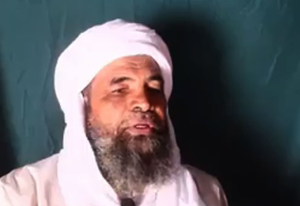 Iyad ag Ghali (TV5MONDE Afrique)
Iyad ag Ghali (TV5MONDE Afrique)
Since Fagaga’s earlier cooperation with Iyad ag Ghali, the latter had adopted a Salafist form of Islam after his experience as a diplomat in Saudi Arabia and association with Tablighi Jama’at missionaries in Mali. He had also become embittered with much of the Kel Ifoghas leadership after having been passed by as the declared successor of amenokal Intallah ag Attaher. Ghali formed his own Islamist movement, Ansar al-Din, which recruited primarily from the Kel Ifoghas while incorporating a number of foreign fighters. Ansar al-Din and the MNLA launched the rebellion as allies in January 2012, but Ghali would later turn against the MNLA and cooperate instead with al-Qaeda in the Islamic Maghreb (AQIM) and the Movement for Unity and Justice in West Africa (MUJWA) to create a short-lived Islamic state in northern Mali. When French forces and their allies from Chad and Niger launched an overwhelming offensive against the Islamist extremists in early 2013, elements of the MNLA were there to act as guides in the mountains and caves of the Adrar des Ifoghas. Mali’s military, in a state of near collapse after their defeat in the north and a bout of internal fighting, played little role in the offensive and were unable to re-establish government authority in the north.
When public buildings in Kidal were turned over to Malian authorities in November 2013, Fagaga showed his displeasure by suddenly departing the city with his men, arms and vehicles to Tinzaoutene, igniting fears that he would resume armed rebellion (L’Aube [Bamako], November 19, 2013).
In the summer of 2014 tensions exploded between the pro-government Platforme movement (including Tuareg, Songhai and Arab fighters) and a rebel coalition led by Hassan ag Fagaga, who had returned from Tinzaoutene. The coalition consisted of the MNLA, the Tuareg Haut Conseil pour l’Unité de l’Azawad (HCUA) and the anti-Bamako faction of the Mouvement Arabe de l’Azawad (MAA). After a series of clashes in Kidal in May 2014 the rebels were defeated at the Battle of Anéfis on July 11, 2014. A running fight followed in the Tabankort region on July 19-21. The result was inconclusive, but the rebels retired to Kidal where they were blockaded by Platforme forces including Colonel Gamou’s Groupe autodéfense touareg Imghad et allies (GATIA).
The clashes led to the Algiers Accord on peace and reconciliation in Mali, signed on May 15, 2015 by all parties except the jihadist groups, who were excluded from the agreement.
There were further skirmishes around Kidal between the CMA and Platforme forces in the summer of 2016. Fagaga joined a delegation of CMA leaders who travelled to Bamako to seek a means of ending the fighting and reviving the implementation of the 2015 Algiers Accord (Le Républicain [Bamako], August 12, 2016).
Months later, Fagaga’s younger brother Azbi was one of the leading suspects in an October 6, 2016 attack by Malian Tuareg fighters on a Malian refugee camp in northern Niger. The attackers killed 22 Nigerien soldiers. A month later a French attack helicopter struck suspected members of the group, killing nine, including Mohamed ag Bahanga, Ibrahim ag Bahanga’s brother (Reuters, October 6, 2016; Actuniger.com, November 7, 2016).
Head of the Interim Authority of Kidal, 2017
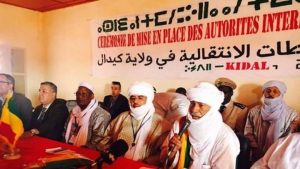 Hassan ag Fagaga (on microphone) at his installation as president of the interim authority of Kidal (Journal du Mali)
Hassan ag Fagaga (on microphone) at his installation as president of the interim authority of Kidal (Journal du Mali)
On February 28, 2017, ag Fagaga was appointed president of the interim authority of the Kidal region, ironically making him the state’s representative for the promotion of national unity, respect for the constitution and the perpetuation of secular government (L’Humanité [Bamako], May 15, 2017). [6] His installation ceremony was attended by officials from Algeria, France, the U.S., the EU and the African Union. However, nothing about the ceremony suggested a return of government authority to Kidal. The national delegation arrived and departed in armored vehicles belonging to the UN peacekeeping force. [7] Armed rebels provided security, the flags outside were those of the Azawad independence movement and women and children chanted independence slogans in the streets (Le Malien [Bamako], March 7, 2017).
The appointment was confirmed with a swearing-in at Bamako on March 16. Only the day before, Fagaga complained that Mali’s government did not want to follow the procedures laid out in the peace agreement for a return to Kidal: “That is why today all the structures established by the peace agreement are still empty shells” (l’Indicateur du Renouveau [Bamako], March 15, 2017).
Bamako’s press had only condemnation for the appointment of “the deserter Fagaga,” a “war criminal” (Le Démocrate [Bamako], March 8, 2017). One daily described the appointment as “a real capitulation,” while another described ag Fagaga as Iyad ag Ghali’s “hired hand,” whose appointment had delivered Kidal to the terrorist leader on a platter (Le Malien [Bamako], March 14; L’Aube [Bamako], February 20, 2017).
Kidal remains a “no-go” region for most Malian leaders and officials, who in practice must obtain permission to visit from the CMA. Even the new governor of Kidal, Sidi Mohamed ag Ichrach, was sworn in at Gao rather than Kidal due to CMA perceptions that he is too closely tied to GATIA and the pro-Bamako Platforme coalition.
On March 2, Fagaga’s one-time comrade and current rival, Iyad ag Ghali, took control of the newly created Jama’at Nasr al-Islam wa’l-Muminin (JNIM), a merger of Ansar al-Din, al-Murabitun, the Macina Liberation Front and the Saharan branch of AQIM. Three days later the group claimed credit for an attack on the military camp at Boulkeissy, just north of the border with Burkina Faso. A series of terrorist attacks have followed.
In May 2017, Fagaga gave his views on Ghali and his violent campaign to impose Shari’a in northern Mali:
Iyad says he is fighting for the application of the Shari’a. It is a noble cause. On the other hand, I do not approve of his method to achieve it… Iyad is a cousin but those who have known me for a long time know well that we do not share the same vision… Iyad says he is fighting for the application of the Shari’a. It is a noble cause. On the other hand, I do not approve of his method of achieving it. I even have doubts about his real will to apply Shari’a. Our prophet taught us that if one wants to be successful in a matter, one must do it with the greatest discretion. This is quite the opposite of what Iyad does (Jeune Afrique, May 12, 2017).
Fagaga has emphasized the need for “moral education” for young Tuareg fighters who have come of age in unsettled conditions, while disparaging those who pose as holy warriors: “A jihadist is no more than a man with a Kalashnikov” (Jeune Afrique, May 12, 2017; Sahelien, May 10, 2017).
Conclusion
Hassan ag Fagaga is an excellent example of the difficulties faced in trying to re-integrate former rebels and deserters into state military structures. When the penalties for desertion and rebellion become a raise or promotion, the military begins to suffer from division and demoralization. Those benefiting from re-integration programs often learn the unintended lesson that placing oneself under military discipline is a personal choice rather than a condition of service.
Colonel ag Fagaga has always been a military character rather than a political player. Even when asked directly, he has struggled to articulate precise reasons for rebellion other than vague references to Bamako’s failure to adhere to specific accords. Now, however, the eternal rebel finds himself in an administrative role (albeit interim in nature) as part of the Malian government. Negotiation and conciliation have never been his strengths, yet these are exactly the qualities he will need to exercise if he is to play anything more than a divisive role as Kidal’s interim leader.
Assuming July’s elections proceed without delay or incident (a large assumption in Mali), the question is where will Fagaga go then? Despite his appointment, there is little evidence he has abandoned his separatist sympathies. The Colonel’s military experience could be of value in combating terrorism, but this would entail the unlikely re-acceptance of the two-time deserter into the Malian Army and his cooperation with long-time rivals such as Generals Gamou and Ould Meydou. It seems just as likely that this “rebel’s rebel” might be unable to resist the lure of a return to the desert wilderness to mount yet another struggle for the independence of Azawad.
Notes
- JS Lecocq, That Desert is Our Country: Tuareg Rebellions and Competing Nationalisms in Contemporary Mali (1946-1996), University of Amsterdam, 2002, p.134.
- For al-Hajj ag Gamou, see “Why Take Up Arms?” Tuareg Loyalty to the State in Mali,” December 1, 2016, https://www.aberfoylesecurity.com/?p=4783
- Georg Klute and Trutz von Trotha, “Roads to Peace: From Small War to Para-sovereign Peace in the North of Mali,” In: Marie-Claire Foblets and Trutz von Trotha (ed.s), Healing the Wounds: Essays on the Reconstruction of Societies after War, Hart Publishing, 2004, pp.118 – 119.
- Stephanie Pezard and Michael Shurkin, Achieving Peace in Northern Mali: Past Agreements, Local Conflicts, and the Prospects for a Durable Settlement, Rand Corporation, 2015.
- Alexander Thurston and Andrew Lebovich, “A Handbook on Mali’s 2012-2013 Crisis,” Institute for the Study of Islamic Thought in Africa (ISITSA) Working Paper Series/Columbia University Working Paper no. 13-001, September 2, 2013, http://www.bcics.northwestern.edu/documents/workingpapers/ISITA-13-001-Thurston-Lebovich.pdf
- Interim authorities were appointed for five northern regions; Kidal, Gao, Ménaka, Timbuktu and Taoudénit. Their appointments will expire after local elections scheduled for July 2017.
- Mission multidimensionnelle intégrée des Nations unies pour la stabilisation au Mali (MINUSMA).

